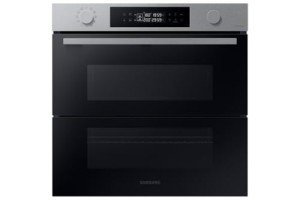Understanding Integrated Ovens: A Comprehensive Guide
In the realm of cooking innovation, integrated ovens have become a popular appliance that integrates functionality, convenience, and design. As home cooking progresses, integrating state-of-the-art services into kitchen areas has ended up being significantly desirable. This article looks into what integrated ovens are, their functions, benefits, and comparisons to standard ovens.
What is an Integrated Oven?
An integrated oven is a built-in kitchen home appliance designed to fit seamlessly within kitchen cabinetry. Unlike freestanding ovens, which inhabit flooring area and are often bulky, integrated ovens are designed to be concealed behind kitchen doors, developing a structured appearance. These ovens are often part of a complete kitchen suite and can consist of alternatives like convection, steam, and mix ovens, offering versatility for different cooking needs.
Secret Features of Integrated Ovens
- Space-saving Design: Integrated ovens occupy less square footage while supplying adequate cooking area, making them perfect for little cooking areas.
- Visual Appeal: They blend harmoniously with cabinets, contributing to a cohesive kitchen design.
- Multiple Cooking Functions: Many integrated ovens come with numerous cooking modes, consisting of baking, barbecuing, steaming, and more, dealing with varied culinary methods.
- Smart Technology: Features like touchscreens, Wi-Fi connection, and programmable settings improve user benefit and precision.
- Energy Efficiency: Many integrated ovens are created to use energy more efficiently than conventional ovens, reducing electrical energy consumption and cooking times.
Kinds Of Integrated Ovens
Integrated ovens are available in various types, each designed to suit various cooking designs and preferences:
- Single Ovens: The most typical type for daily cooking and baking.
- Double Ovens: Suitable for jobs needing simultaneous cooking at various temperature levels.
- Steam Ovens: Ideal for health-conscious cooking, preserving nutrients while ensuring wetness.
- Microwave Ovens: Often integrated with other ovens for flexibility and quick cooking.
- Combi Ovens: Hybrid systems that combine standard and steam cooking, providing an exceptional all-in-one solution.
Advantages of Integrated Ovens
The advantages of integrated ovens extend well beyond their modern-day aesthetic appeals. Here are some notable benefits:
- Enhanced Kitchen Design: They offer a sleek, modern-day look that improves the general kitchen visual.
- Improved Functionality: The variety of cooking techniques and functions accommodates versatile culinary needs.
- Increased Value: Integrated appliances can increase home worth, making homes more appealing to possible buyers.
- Ease of Use: Intuitive controls and functions simplify the cooking process, enabling greater cooking exploration.
- Safety Features: Many integrated ovens include extra security functions to avoid accidents, especially important in household homes.
Contrast Table of Integrated Ovens vs. Traditional Ovens
| Function | Integrated Ovens | Traditional Ovens |
|---|---|---|
| Design | Built-in, smooth with kitchen cabinetry | Freestanding, uses up area |
| Cooking Functions | Numerous (often adjustable) | Generally basic performances |
| Area Efficiency | Enhanced for small kitchens | Needs more space around the system |
| Energy Efficiency | Frequently more energy-efficient | Can vary considerably |
| Smart Technology | Lots of designs consist of wise integration | Traditional ovens often do not have smart features |
| Aesthetic Appeal | Modern, integrated into the kitchen design | More obvious, can interfere with style |
Considerations Before Purchasing an Integrated Oven
Selecting the ideal integrated oven includes a number of essential elements:
- Space Availability: Before purchase, determine your readily available kitchen space to ensure a great fit.
- Cooking Needs: Identify what kinds of cooking you often do to select the appropriate features.
- Budget plan: Integrated ovens vary substantially in rate, so budget plan factors to consider are essential.
- Setup Requirements: Professional setup may be required, including to the general expense.
- Brand Reliability: Research brands and read evaluations to guarantee you pick a reliable maker.
Regularly Asked Questions (FAQs)
1. Are integrated ovens more expensive than conventional ovens?Yes, integrated ovens tend to be more costly upfront due to their advanced technology and style. Nevertheless, they can boost the general value of your kitchen. 2. Can integrated ovens be installed anywhere?No, integrated ovens need to fit within particular cabinetry styles. It's vital to prepare your kitchen design before selecting an integrated oven. 3. Do integrated built in electric oven and hob package require expert installation?While some house owners may opt to set up integrated ovens themselves, professional setup is typically advised to guarantee security and appropriate function. 4. How do
I preserve my integrated oven?Regular cleansing is necessary. Make use of the self-cleaning function (if offered ), and keep the oven doors and racks clean after each use.
5. Can I link my integrated oven to wise devices?Many modern integrated ovens are created with smart functions, allowing you to manage them by means of mobile phone or voice commands. Integrated ovens represent the next development in kitchen appliances, combining modern style with cutting edge cooking innovation. They not just enhance the kitchen's visual appeal however likewise use versatile cooking performances fit for numerous cooking abilities and preferences. Selecting an integrated oven needs careful consideration of area, cooking requirements, and budget, but the possible advantages, including enhanced kitchen visual appeals and increased home worth, frequently make them a rewarding investment. With the best integrated oven, culinary lovers can elevate their cooking experience to brand-new heights.

